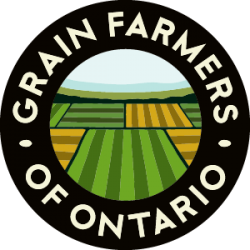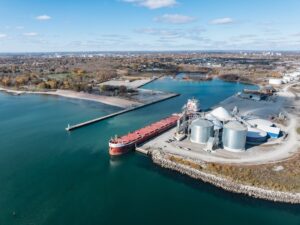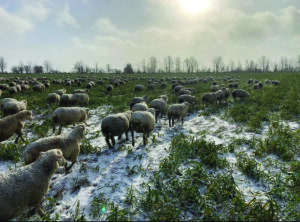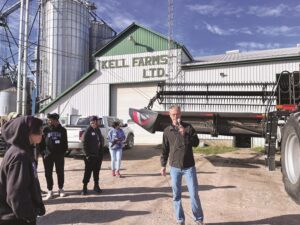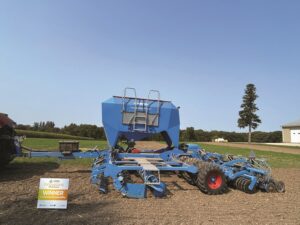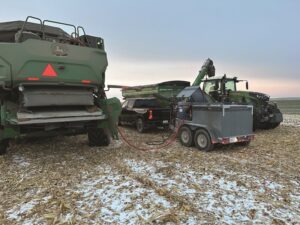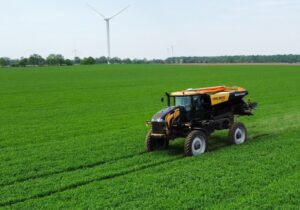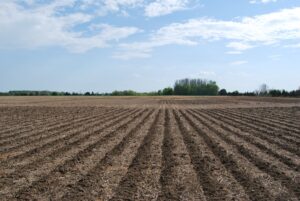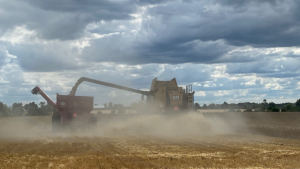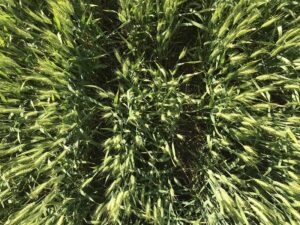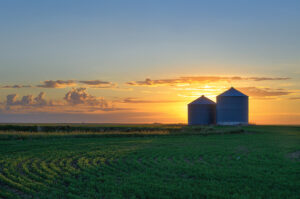How agriculture adapts to climate
An economist weighs in
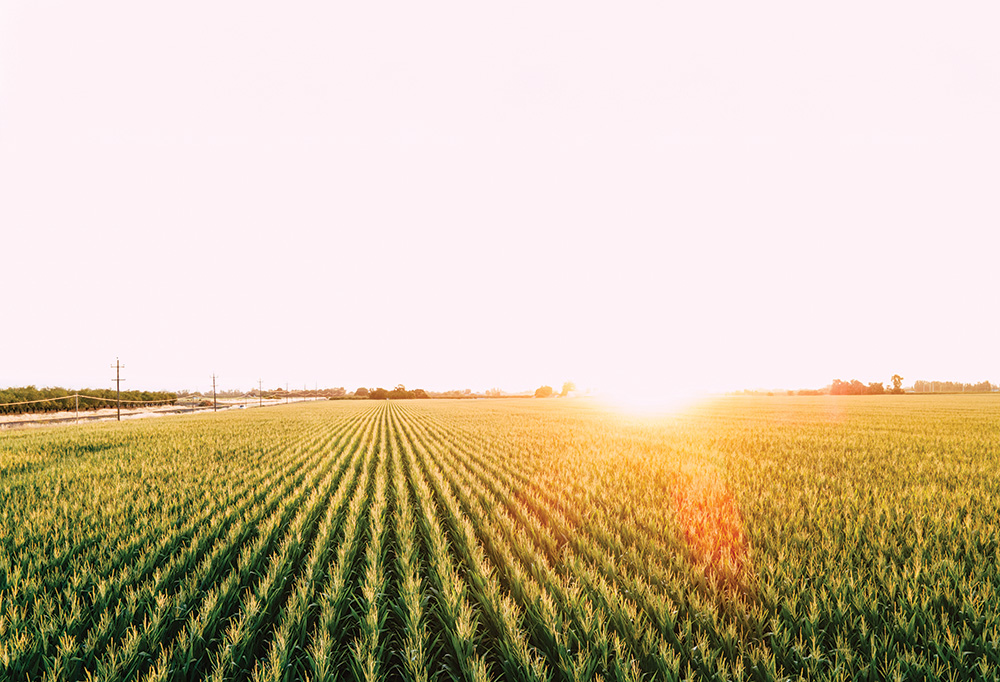
Dr. Al Mussell started his session at the 2025 Southwest Agriculture Conference with a confession: he’s not a climatologist. Yet his prowess as an economics researcher provides a foundation to address some questions about climate change and its effects on agriculture.
“I began to get concerned that we’re worried about the effects of agriculture on climate, and not enough about the effects of climate on agriculture, if it’s changing,” said Mussell, research lead with Agri-Food Economic Systems Inc. “The other thing with the art of farming is how we manage to keep things going under a range of circumstances and understand what these circumstances may be—adverse or otherwise—that we may encounter.”
CONFLICTING DATA
He began with the question: Is the Earth warming? The answer was “Yes.” Data from the National Aeronautics and Space Administration (NASA) from 1951 to 1980 indicated mean temperatures rose by 1.2 °C. In Canada, temperatures have risen by about 1.7 °C since 1948. As Mussell noted, those increases have occurred overwhelmingly in the North and during winter. It’s not the daytime highs that are increasing, but low temperatures that are rising.
The basic message is that crop heat units (CHUs) are increasing on the Prairies, and there are more days exceeding 25 and 30°C, the two markers that meteorologists use. It’s also getting wetter—and significantly wetter—but it’s mostly in the North, and there are specific parts of Canada that are much wetter—yet there are some that are drier. Nothing is consistent.”The difficulties we’ve had—right or wrong—around public acceptance of our ambitious climate-change agenda is that it’s not popular in rural Ontario, but it’s really unpopular in Western Canada,” added Mussell. “So far, there’s no evidence of increased drought. The monolithic drought in Western Canada occurred after World War I and lasted years. There is some expectation in the literature that there will be future droughts, perhaps more frequently but shorter-lived, and we haven’t experienced them yet.”
LONG-TERM CHANGES
The bulk of the changes in temperature and precipitation have occurred over longer periods of time. From 1971 to 2000, CHUs, with a May 1 start date, averaged 3400 at Ridgetown and 2800 at Elora.
“A few years ago, we had Weather INnovations rerun this,” said Mussell, displaying a map for 2011 to 2020. “At Ridgetown, that is 3800 heat units and Elora would be about 3200 heat units. When I came to Guelph as a student in the late 1980s, north Wellington and north of that was marginal for grain corn. But it isn’t today.”
Some of that results from improved breeding and shorter-season hybrids, but part of it is more heat.
The other factor in the CHU picture is the effects of a year’s first killing frost. With the 1971 to 2000 CHU map, the totals were measured until the first killing frost. The map for 2011 to 2020 ran through to the end of October; however, as Mussell pointed out, there isn’t typically a killing frost by October 31 in southern Ontario. The bottom line, he added, is there’s more heat.
THE CO2 EFFECT
The more intriguing metric cited in Mussell’s presentation was the increased concentration of atmospheric carbon dioxide (CO2), its marked increase, and its effect on yields.
In plants, there are C3 and C4 photosynthetic pathways with C3s (cereals, legumes and oilseeds) limited in their efficiency. With an elevation in atmospheric CO2, plants bypass that stumbling block with resulting changes in yield.
Corn is the exception, and as a C4 plant, it doesn’t have a limitation in terms of photosynthesis and photosynthetic efficiency. Oddly enough, corn shows little impact from elevated CO2 concentrations, unlike wheat and barley, which saw a 19 per cent yield response, according to research data. Soybean’s yield response was 16 per cent. Mussell conceded that some increases come from an improved understanding of plant physiology and enhanced fertility programs, but the increases due to CO2 concentration are significant.
Understanding how CO2 is affecting crop production affects nutrient content, which could affect food security issues for those who rely on wheat and rice. That, said Mussell, leads to a recalibration when considering breeding decisions and the effects on the nutrient value of these crops.
“There’s less research done on seed, but you can imagine that when you start messing with the chemistry of the crop and the chemical content of the kernel, you run the risk of changing the value of the seed,” said Mussell. “There’s some thought that if seed quality declines, seed vitality will decline.”
That could affect germination, although his research of the literature on that part of the discussion was not definitive. The second concern with warming in a northern climate like Canada is the migration of pests from southern regions, and that is becoming more apparent.
In a NASA study, it was theorized that higher yields in wheat will carry lower nutritional content. Corn yields are predicted to drop measurably, and Mussell suggested that forecast is driven by the depletion of irrigation-fed corn production in the U.S. Midwest and changes in rainfall patterns.
“Where does that leave us?” posed Mussell. “Well, we’re warmer and wet to varying degrees and in a northern climate, this is beneficial. An agronomist recently told me with soybean yields in Ontario, the basic limitation is warmth.”
That may result in moving certain crops into Northeastern Ontario. The Timiskaming Nipissing Districts are growing soybeans and cereals, and some producers have managed to grow corn. Farther north in the Northern Clay Belt—from Kapuskasing to Cochrane—they may be able to grow soybeans or corn, although it may take decades.
SHORT-TERM
Global food scarcity continues to be the more immediate challenge, said Mussell, and consumption of wheat, barley, oats, and corn is increasing while global ending stocks are decreasing by one per cent per year.
“If we get into mitigation that impairs our efficiencies, it may not be a good idea,” he added. “There is real scarcity in the world, and we’re really just feeding ourselves by taking down these stocks because production isn’t keeping up with consumption.”
Yet Canada is a big player in this staple food picture. As exporters, we’re first in canola, third in soybeans (not meal or oil), fourth in pork and seventh in beef. Globally, food may be scarce, but Canada is a top producer.
“How much are we really going to mitigate, and how should we compare that against our contribution to trade in agri-food?” said Mussell. He noted Canada represents 1.4 per cent of global greenhouse emissions yet accounts for 5.5 per cent of agri-food imports and exports. “How far could you sensibly go to chip away at the five per cent when you’re only 1.4 per cent?”
Reducing gas emissions is a good idea, concluded Mussell, but at what cost? When measuring the effects on Canadian agriculture, the discussion surrounding climate needs to change. •

